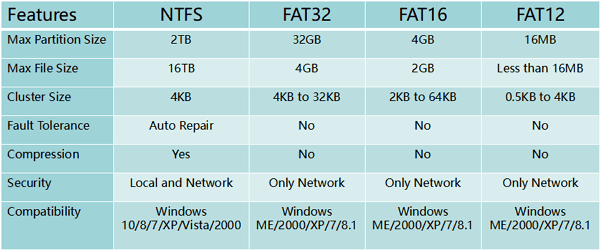

- #Disk utility for mac fat16 mac os x
- #Disk utility for mac fat16 install
- #Disk utility for mac fat16 pro
- #Disk utility for mac fat16 free
- #Disk utility for mac fat16 windows
Windows 98 introduced a utility to convert existing hard disks from FAT16 to.
#Disk utility for mac fat16 mac os x
Each volume within an APFS container can have its own APFS format-APFS, APFS (Encrypted), APFS (Case-sensitive), or APFS (Case-sensitive, Encrypted). Mac OS 9 and Mac OS X support FAT file systems on volumes other than the. You can easily add or delete volumes in APFS containers. For example, folders named “Homework” and “HOMEWORK” are two different folders.
#Disk utility for mac fat16 install
Download and Install Disk Drill for Windows or Mac OS. For example, folders named “Homework” and “HOMEWORK” are two different folders.ĪPFS (Case-sensitive, Encrypted): Uses the APFS format, is case-sensitive to file and folder names, and encrypts the volume. If any are found, run chkdsk /r followed by a reboot of the system, in order to try and repair them. Choose this option if you don’t need an encrypted or case-sensitive format.ĪPFS (Encrypted): Uses the APFS format and encrypts the volume.ĪPFS (Case-sensitive): Uses the APFS format and is case-sensitive to file and folder names. Each volume uses only part of the overall container, so the available space is the total size of the container, minus the size of all the volumes in the container.Ĭhoose one of the following APFS formats for Mac computers using macOS 10.13 or later.ĪPFS: Uses the APFS format. If desired, you can specify reserve and quota sizes for each volume.
#Disk utility for mac fat16 free
When a single APFS container has multiple volumes, the container’s free space is shared and is automatically allocated to any of the individual volumes as needed. macOS 10.13 or later supports APFS for both bootable and data volumes.ĪPFS allocates disk space within a container (partition) on demand. While APFS is optimized for the Flash/SSD storage used in recent Mac computers, it can also be used with older systems with traditional hard disk drives (HDD) and external, direct-attached storage.
#Disk utility for mac fat16 pro
However, I’m using Catalina on a 16-inch MacBook Pro for this tutorial.Apple File System (APFS), the default file system for Mac computers using macOS 10.13 or later, features strong encryption, space sharing, snapshots, fast directory sizing, and improved file system fundamentals. These instructions apply, for the most part, to other versions of macOS besides Catalina. cdr file extension.ĭisk Utility creates the disk image file where you saved it in the Finder and mounts its disk icon on your desktop and in the Finder sidebar.

DVD/CD master: Changes the size of the image to 177 MB (CD 8 cm).Read/write: Allows you to add files to the disk image after it’s created.Sparse disk image: Creates an expandable file that shrinks and grows as needed.Sparse bundle: Same as a sparse image, but the directory data for the image is stored differently.Hit cmd + space to run Spotlight, type: terminal, and hit Enter. Connect the USB flash drive to your Mac computer. To format FAT32 on Mac with Terminal, follow the next steps: Step 1. Again, create a backup before taking this action. Click the Image Format pop-up menu, then choose an option: The command-line behavior does the same way to erase data with the Disk Utility.Click the Partitions pop-up menu, then choose a partition layout.To encrypt the disk image, click the Encryption pop-up menu, then choose an encryption option.If the disk will be used with Windows or Mac computers and is over 32 GB, choose ExFAT.If the disk will be used with Windows or Mac computers and is 32 GB or less, choose MS-DOS (FAT).If the disk will be used with Macs, choose Mac OS Extended (Journaled) or Mac OS Extended (Case-sensitive, Journaled). This utility In the Disk Utility app on your Mac, select a volume in the sidebar, then click the Partition button in the toolbar.With macOS, to create an empty disk image, launch Disk Utility by opening Launcher, go into the “Other” folder, and then click the Disk Utility icon. Just create an image of that drive and store it. If you want to keep data from a computer, you don’t need to keep the actual hardware around.This gives you the flexibility to change back to any preferred configuration. You can make as many different images as you want.There’s no need to set up every computer separately or set up the whole operating system from scratch.There’s a lot of benefits to disk imaging, as noted by Dmitry Shesterin at. You can fill an empty disk image with data, then use it to create disks, CDs, or DVDs. In other words, it’s a file that contains other files and folders. A disk image (.dmg file) is a file that looks and acts like a mountable device or volume. Using the Disk Utility in macOS, you can create a blank disk image for storage.


 0 kommentar(er)
0 kommentar(er)
